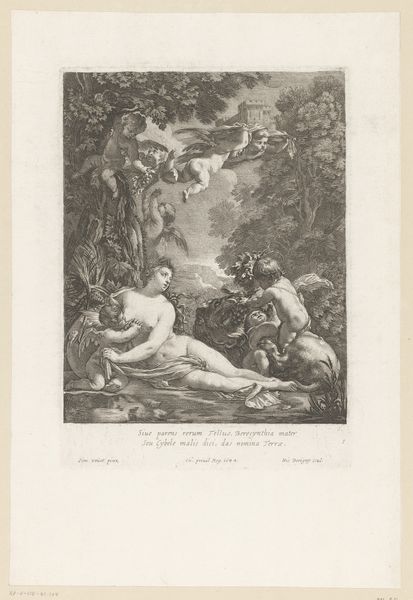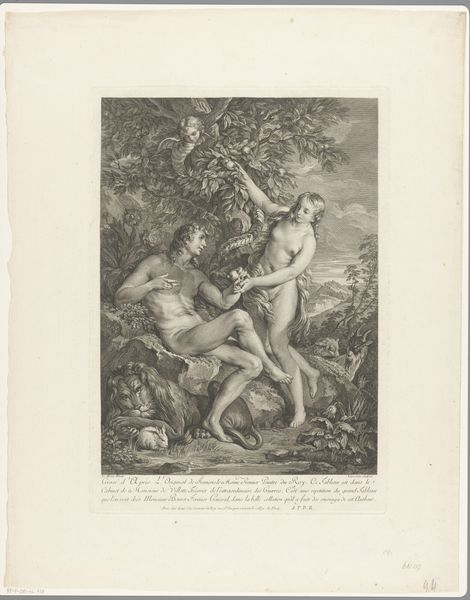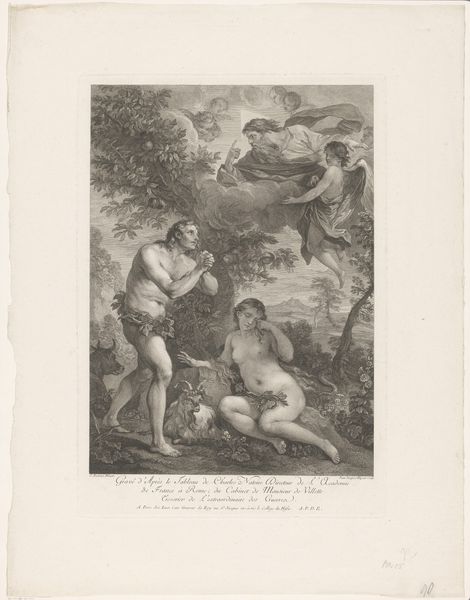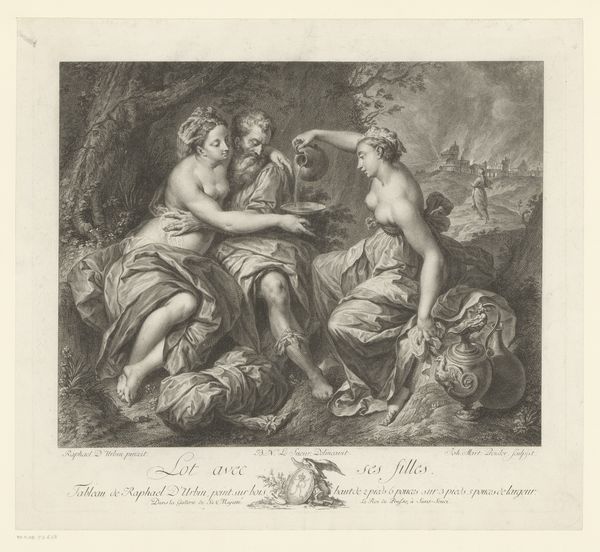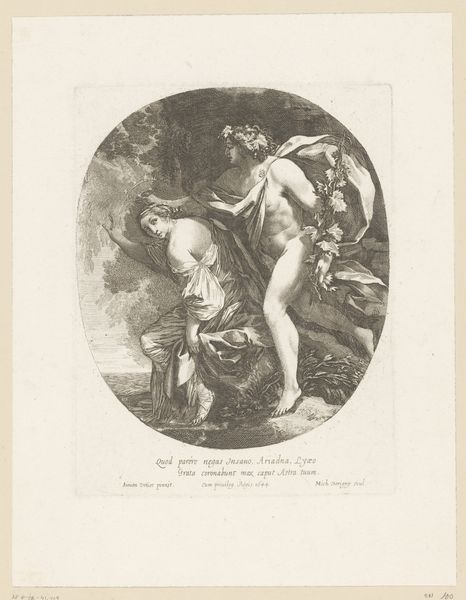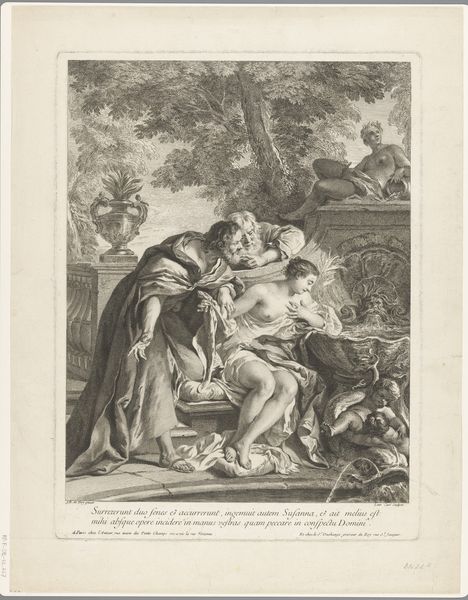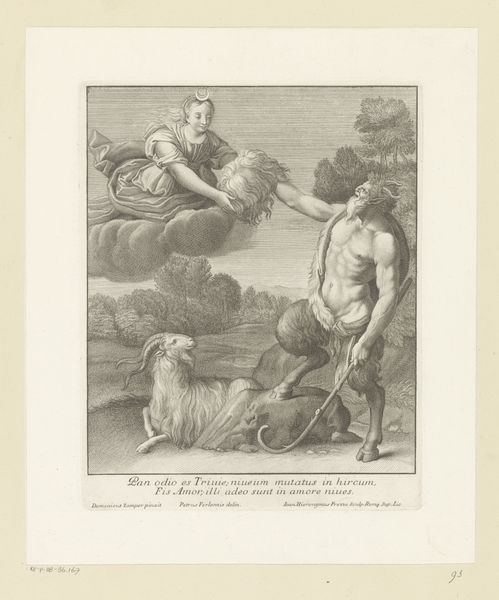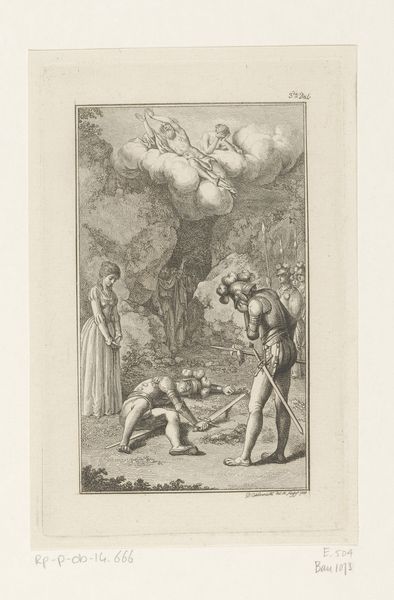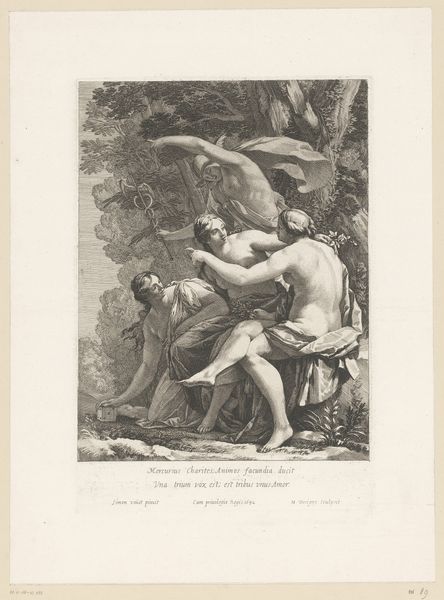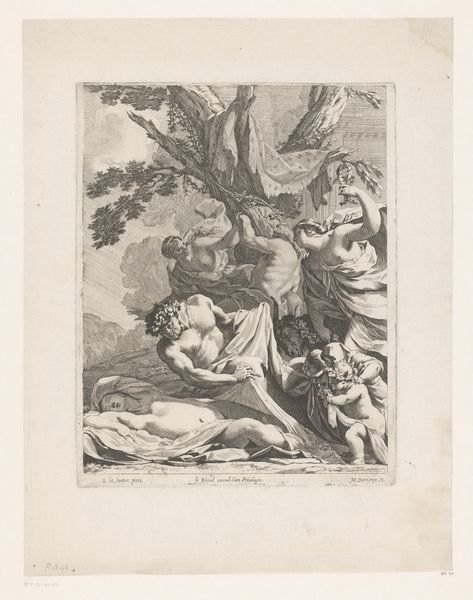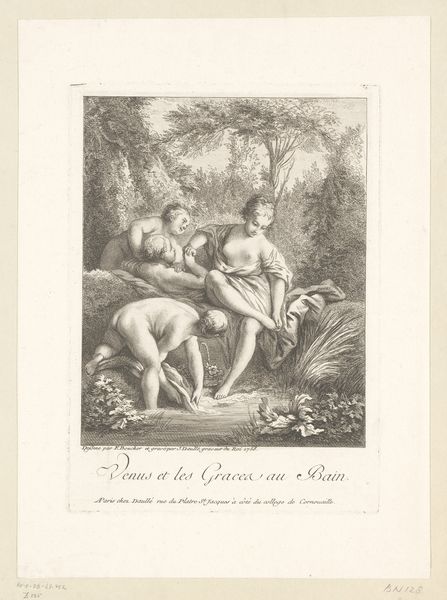
print, engraving
#
allegory
#
baroque
# print
#
old engraving style
#
traditional media
#
figuration
#
line
#
history-painting
#
nude
#
engraving
Dimensions: height 265 mm, width 211 mm
Copyright: Rijks Museum: Open Domain
Art Historian: We're looking at "Diana bezoekt slapende Endymion," or "Diana Visiting the Sleeping Endymion," an engraving that dates back to 1713. It's made by Giovanni Girolamo Frezza. Curator: It's immediately striking how meticulously detailed it is for an engraving, all those tiny lines working together to create light and shadow. It feels almost dreamlike, doesn’t it? Art Historian: Indeed. The scene depicts the goddess Diana, the moon incarnate, gazing lovingly upon the mortal shepherd Endymion. Sleeping figures are traditionally symbolic of earthly existence. The divine comes to earth. It speaks to the allegory of divine love and otherworldly transcendence. Note that her divinity is signaled by the cloud she floats upon. Curator: Given its time, the image has all the tell-tale signifiers of luxury printmaking of that period. Imagine the painstaking work that goes into creating the matrix for printing – each line carefully incised into a metal plate to produce images for distribution. Who was buying these prints? How were they being consumed? Art Historian: Wealthy patrons, undoubtedly. And what they’re consuming isn’t just an image but a sophisticated narrative woven from classical mythology, of yearning, of the unattainable… Diana's eternal love for a mortal also hints at a melancholy desire and the limitations of our temporal lives, especially in light of this shepherd sleeping through her divine visit. He remains asleep and does not interact with her in any way. It heightens this sense of loss and lack of control. Curator: And perhaps also control in how images dictate norms: engravings such as these spread an understanding and interpretation of mythological characters but also how their bodies look or how they ought to perform. Art Historian: Absolutely, prints were pivotal in disseminating and standardizing visual codes across society. This piece shows an ongoing fascination with love as an eternal subject, even across the divide of divinity and humanity. The iconography provides layers of depth beyond the simple visual elements. Curator: Seeing the textures achieved with simple lines still intrigues me. Art Historian: It offers us a powerful glimpse into how mythology, skillfully crafted with precise artistry, speaks to both timeless longings and very temporal concerns.
Comments
No comments
Be the first to comment and join the conversation on the ultimate creative platform.

